University of California, Berkeley
UC Berkeley (Cal; Berkeley) is the flagship campus in the University of California system. Home to the Free Speech Movement of the 1960s and Apartheid Divestment Movement of the 1980s, Berkeley has a long history of student political activism. Berkeley faculty and alumni have collectively won 114 Nobel prizes, reflecting the campus's world-class social and scientific research. Undergraduates have numerous opportunities to conduct field, lab and library research with professors renowned in their fields.
Located just over the Bay Bridge from San Francisco and just 45 miles from Silicon Valley, Berkeley students have access to some of the best jobs in the technology sector, as well as a vibrant metropolis to explore.
Interestingly, the city of Berkeley was named after the school, unlike most other colleges and universities, which are typically named after their city. For a fascinating look at Berkeley's unique history as a leader in the public university movement from in the 1800s on, read John Aubrey Douglass: The Conditions for Admission: Access, Equity, and the Social Contract of Public Universities.
Highlights
Academics
Research
Transit
Night Life
Lowlights
Housing
Support
Diversity
Pre-Med
Contents
- Students who thrive
- Students who may have challenges
- Successful applicants
- How the application process handles majors
- Academics
- Academic support
- Support for disabilities & learning differences
- Financials
- Housing & transportation
- Social life, recreation & campus spirit
- Athletics
- Health
- Graduation requirements
Quick Info
Students who thrive
Students who thrive at UC Berkeley are self motivated, independent, and accountable to themselves. They are comfortable taking foundation classes in large lecture halls and seeking support when they need it. They are also comfortable in a large, urban setting where they will have to find their own social structure. Students who want to explore a wide range of disciplines thrive at UC Berkeley, given the enormous range of majors and courses taught by some of the most highly respected professors in their fields. Students who want to do research in any field and have access to a vast library system, extensive archives, and unique research museums will also thrive here.
Students who value political activism on campus will find plenty of opportunities to engage at UC Berkeley, but students who are not interested in political activism will also feel comfortable and can avoid political engagement. UC Berkeley has one of the most powerful elected student government systems in the world, controlling a multimillion-dollar annual budget and segments of campus policy. Students can run for one of several elected office, or become involved in campus political parties and campaign groups to help advocate for and steer campus and city policy on a range of issues important to the campus, the city of Berkeley, and the students who live and study there.
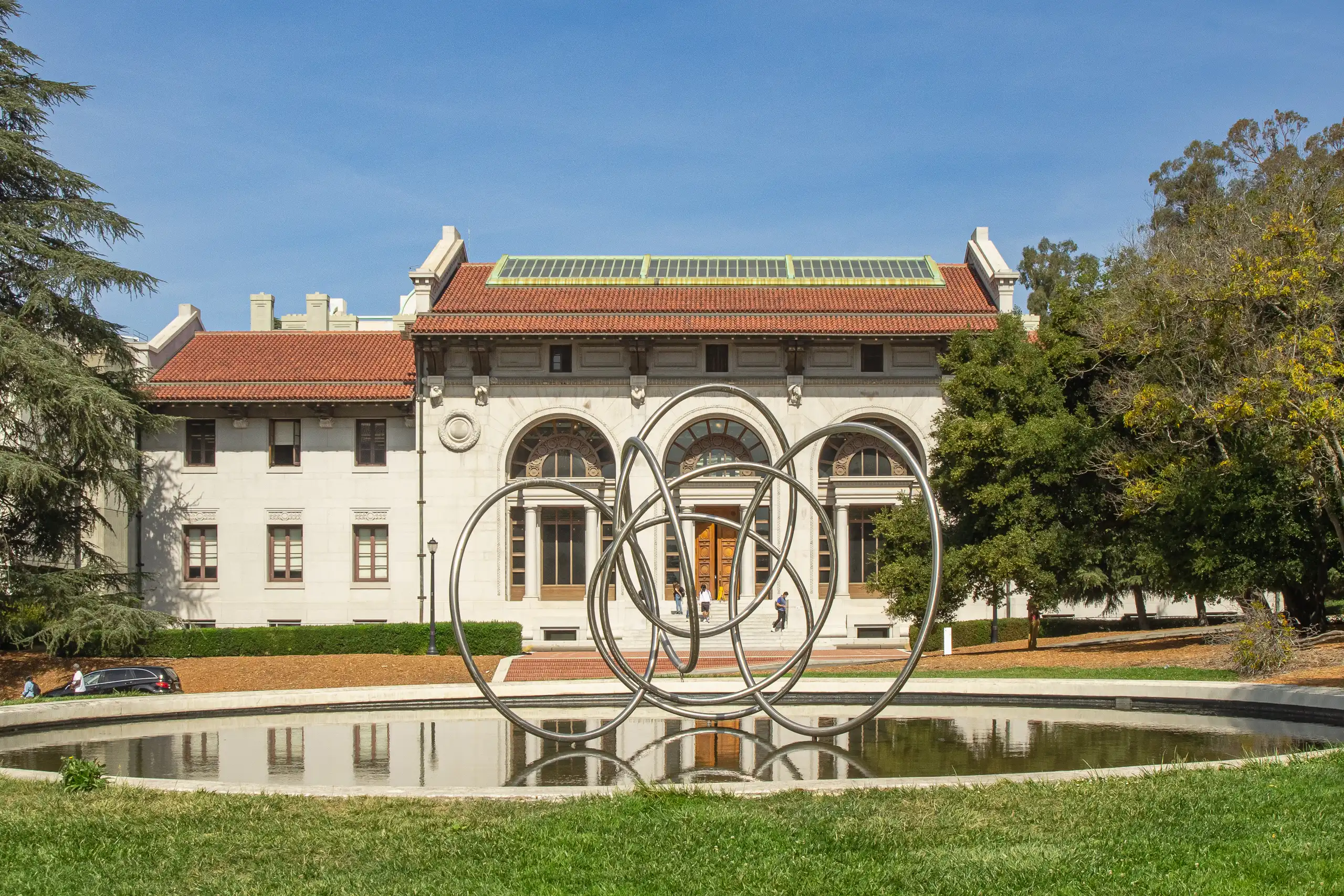
Students who may have challenges
Students whose GPA puts them in the bottom half of admitted students or who took few advanced courses in high school may have significant challenges keeping up with the fast pace and high level of UC Berkeley courses, especially in the sciences. Pre-med students whose academic achievements do not place them among the top admitted students may find it especially difficult to earn the grades necessary to gain admission to medical school. These students, in particular, should seek out academic support resources, including tutoring services and regular interaction with professors and teaching assistants. Students who want a personalized learning experience with robust academic advising or who aren’t independently motivated to stay on top of schoolwork will also find it difficult to keep up.
UC Berkeley’s campus is beautiful, with majestic buildings, stands of eucalyptus and redwood trees, and a year-round creek running through campus, but the surrounding community is dense, urban, and, in some places, rather “gritty.” Many students love the Berkeley vibe, but those who are looking for a more comfortable suburban or rural environment may find Berkeley less appealing.
Because UC Berkeley is such a large campus, many students have the experience of feeling isolated and having difficulty making friends or finding a stable social group. There are many varied social spaces for students to explore, but seeking out the right ones can be a daunting experience that requires a large degree of self-motivation and persistence. Students who feel more comfortable in social contexts where structure is provided externally, such as by the school administration, may find UC Berkeley's social life to be a challenging experience.
UC Berkeley has struggled with underrepresentation of marginalized communities of color since California passed Proposition 209 in 1996. As a result, Black, Latinx/Chicanx, Indigenous American, and Pacific Islander students may have the experience of being the only person of their ethnicity or race in some campus spaces. Several organizations, in particular the Student Development Offices, and certain co-ops, dorm programs, Greek houses, and clubs, exist to provide community support and resources to marginalized student communities, but some students may still find the Berkeley experience to be somewhat isolating.
Successful applicants
Successful applicants are high achievers in their high schools, typically in the top 5 to 10% of their graduating classes. Successful applicants challenge themselves by taking the most rigorous coursework available and demonstrate deep involvement in extracurricular activities that have a purpose, whether to improve themselves, their school or their community. For some majors, such as engineering, successful applicants’ coursework and extracurricular activities provide a strong foundation for success in that major, and a very strong GPA in rigorous classes demonstrates readiness for the rigors of the major.
All UC campuses are test blind and will not consider SAT or ACT scores, but they will consider AP and IB scores. All UC campuses are prohibited from considering “hooks” that favor students based on factors beyond the student’s control, such as demographic factors, ability to pay, being related to faculty, alumni or donors, or knowing politicians or other famous people. A “hook” that may be used in the admissions process is recruitment for a special talent, most commonly athletic talent, for the purpose of filling a spot on an athletic team. However, of the 32,000 undergraduates at UC Berkeley, only about 900 (~3%) are student-athletes, some of whom are walk-ons (and therefore not recruited).
Fall Program for Freshmen (FPF)
First-year students admitted to the College of Letters & Science (L&S), the largest college on campus, are also offered the option to participate in the Fall Program for Freshmen (FPF). FPF used to be a way of admitting a small group of freshman applicants in the spring, but now any student admitted to L&S can participate in this fall-semester program. FPF students live in traditional on-campus housing with other Berkeley freshmen, but they take the majority of their courses at the Golden Bear Center, which is three blocks from the main campus. Each year’s FPF student cohort explores a different theme through the FPF curriculum, and students can complete math and reading & composition requirements, as well as make progress toward general education requirements. The main advantage of participating in FPF is the small community and class sizes.

How the application process handles majors
Six colleges at UC Berkeley house undergraduate majors:
- College of Chemistry
- College of Engineering
- College of Environmental Design
- College of Letters & Science
- Haas School of Business
- Raussler College of Natural Resources
Five of the six colleges—all of them except the Haas School of Business—admit first-year (freshman and transfer) students directly into the college, but generally students are not directly admitted into the major. Instead, students are admitted undeclared but are asked to identify subjects they are interested in pursuing for their majors. Students may declare or apply for a major at any time prior to achieving junior standing, but once they achieve junior standing, it is required.
Cal has recently updated its process for admitting students to high-impact majors in the College of Letters & Science. Students who apply to the major and are admitted will be guaranteed a place in the major when the time comes to declare. The declaration for these students is simplified relative to students who apply for the major during their time at UC Berkeley. To view the full list of high-impact majors, click the link above, and then click "High Demand/Impacted majors".
The Haas School of Business is unique among the six colleges because it only admits students with junior standing. Therefore, only rising juniors at UC Berkeley or transfer applicants can apply directly into the Haas School of Business. There are two exceptions–students admitted to the Management, Entrepreneurship, and Technology (MET) and Global Management Program (GMP) enter Haas as first year students.
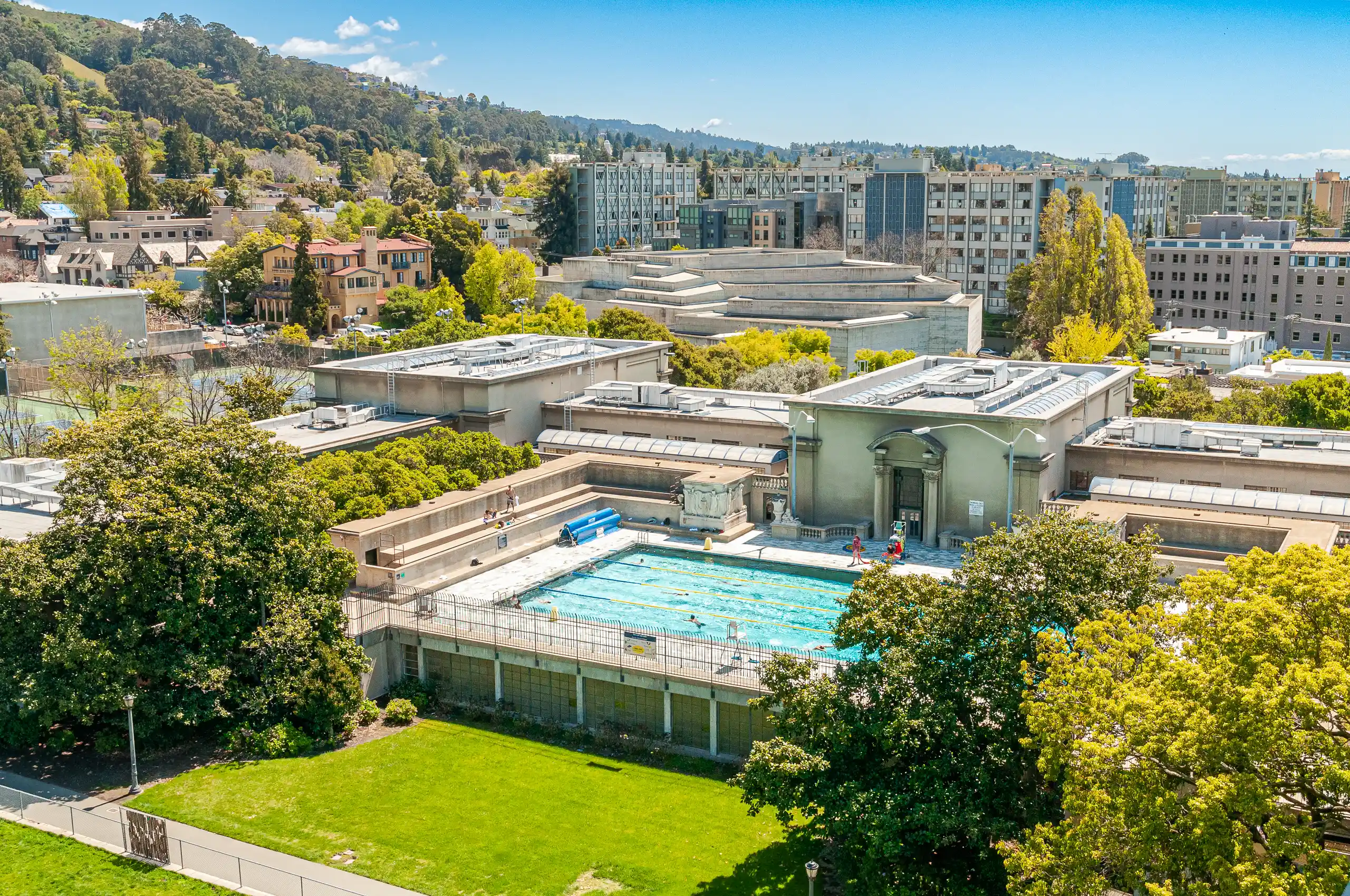
Academics
UC Berkeley offers one of the broadest catalogues of courses, majors, and degree programs of any university in the world. If you want to take a class here, you will probably be able to find and enroll in it. The university offers, for example, courses and majors in many languages that are not offered at any other university, including indigenous Californian languages, Old Norse, Akkadian, Old Church Slavic, Mongolian, Khmer, and many more. Its Electrical Engineering & Computer Science (EECS) program is among the most competitive for students interested in computer engineering careers in Silicon Valley. The Political Economy interdisciplinary major offers students the opportunity to explore civilizations, history, and government through analysis of the intersection between economic systems and state power structures.
One area where it is weaker, however, is pre-med, both because Berkeley does not have its own medical school, and because of the extreme rigor of its biology and other pre-med courses. Students interested in going on to medical school can thrive at Berkeley if they are exceptionally motivated and capable, but it is not the best option for most.
As a large public research university, Cal suffers from very large class sizes—some lower-division lectures enroll up to 800 students each semester. The majority of classes offered, however, are much smaller, in the range of 20-50 students, with a considerable number of courses enrolling under 15 each semester. In fact, in some departments, such as world language departments, it is possible for undergraduates to take courses with a professor and as few as 1 other student. For more information on the distribution of class sizes, please visit the UC Berkeley Office of Planning & Analysis's helpful website.
Undergraduates have access to different course structures depending on the subjects they are interested in. Most departments, particularly humanities, social science, and math departments, offer large lecture courses that meet two or three times per week, along with sections that meet once or twice each week. Lectures are usually given by faculty members, while sections are taught by graduate students. While lectures may enroll as few as 30 and as many as 800 students, sections typically have fewer than 20 students and offer the opportunity for students to ask questions about reading assignments and lecture content, as well as prepare for exams in a structured environment with classmates and a knowledgeable graduate student instructor (GSI).
Research and applied science courses are structured similarly, with a lecture component and labs. Labs are similar to sections except that they offer the opportunity for students to engage in the kinds of scientific work that apply the material taught in lectures.
Upper division students, who have begun to specialize in their coursework, tend to enroll in much smaller classes that lower division students. In the third and fourth year, lectures are smaller, seminars are more common, and there are more opportunities for research-based courses.
Although most students will receive a major degree from a traditional department, Cal offers interdisciplinary degree programs, such as the Interdisciplinary Studies and Global, International & Area Studies degree programs, through non-departmental campus institutions.
Study Abroad
UC Berkeley offer a broad range of study abroad programs:
- Global Edge for incoming freshman, who spend the summer at Berkeley and then fall semester in London;
- UC Education Abroad (UCEAP), the most popular study abroad program for currently-enrolled students, offering study, research, and internship opportunities abroad;
- Summer Abroad, intensive summer courses taught by Berkeley faculty;
- and many more!
Many Berkeley students from all across campus take advantage of the many study abroad programs to spend a semester or year at an institution overseas, typically in the fall or spring of junior year.
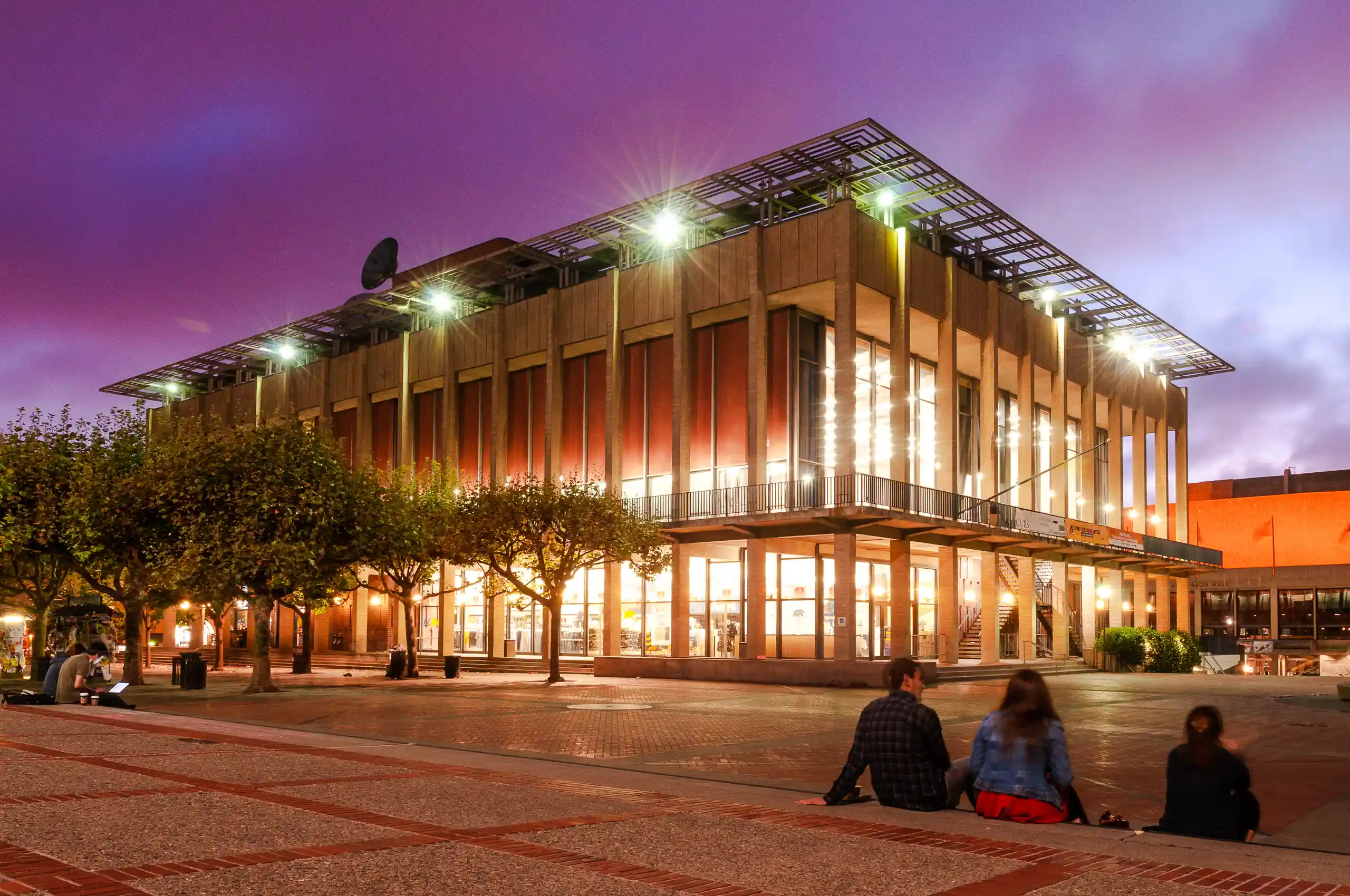
Academic support
UC Berkeley provides a variety of academic support services on campus. The Fall Program for Freshmen (FPF), mentioned above, can be an excellent way for students to transition into the fast pace at Berkeley by participating in a small, supportive learning community during the first semester.
UC Berkeley also has a large Student Learning Center (SLC) that provides mostly peer-to-peer academic tutoring by student tutors who were highly successful in the subjects and classes that they tutor. The SLC has drop-in and appointment-based programs in writing, science, economics, math, and other academic areas that are known to be especially rigorous, and the SLC Strategic Learning Program provides students with skills to thrive academically.
Students who are non-traditional, first generation, or underrepresented will find additional support services in the Centers for Educational Equity and Excellence, which includes the Educational Opportunity Program (EOP), the Transfer Student Center, and many other programs. In addition, residence halls are served by live-in and affiliated faculty who mentor students and provide programming through the Resident Faculty Program.
Support for disabilities & learning differences
Students with physical, learning or other disabilities can receive services through the Disabled Students’ Program (DSP). The DSP coordinates care for students with disabilities, and it provides accommodations, such as extended test time, dictionaries and calculators in exams, note takers, reading technologies, spell-checker during exams, distraction-reduced exams, proctors, and scribes. DSP does not provide accommodations for oral exams. One-on-one peer tutoring may be available in some cases, and there is no additional charge for learning difference, ADHD, or ASD support services. Under some circumstances, disabled students may be allowed course waivers or substitutions for math or foreign language requirements.
UC Berkeley has a decades-long history accommodating and supporting students with disabilities, having established one of the nation’s first disability services programs to accommodate physically disabled students. The program has grown and expanded to accommodate students with most types of disabilities, including learning disabilities. The DSP also has a program for students on the autism spectrum, called Spectrum Connect, to support executive functioning, self-advocacy, academic skill development, social connection, and career readiness.
While UC Berkeley remains a top choice for high achieving physically disabled students, due to its highly accessible campus and surrounding community, students with slow processing speed, dyslexia, executive functioning or similar disabilities may find UC Berkeley quite challenging to navigate, given its lack of structured learning difference support programs and the expectation of a high degree of independence among undergraduates. UC Berkeley has experienced significant growth in undergraduate enrollment over the past 10 years, and it isn’t clear that the campus’s student support services have been able to keep up with demand.
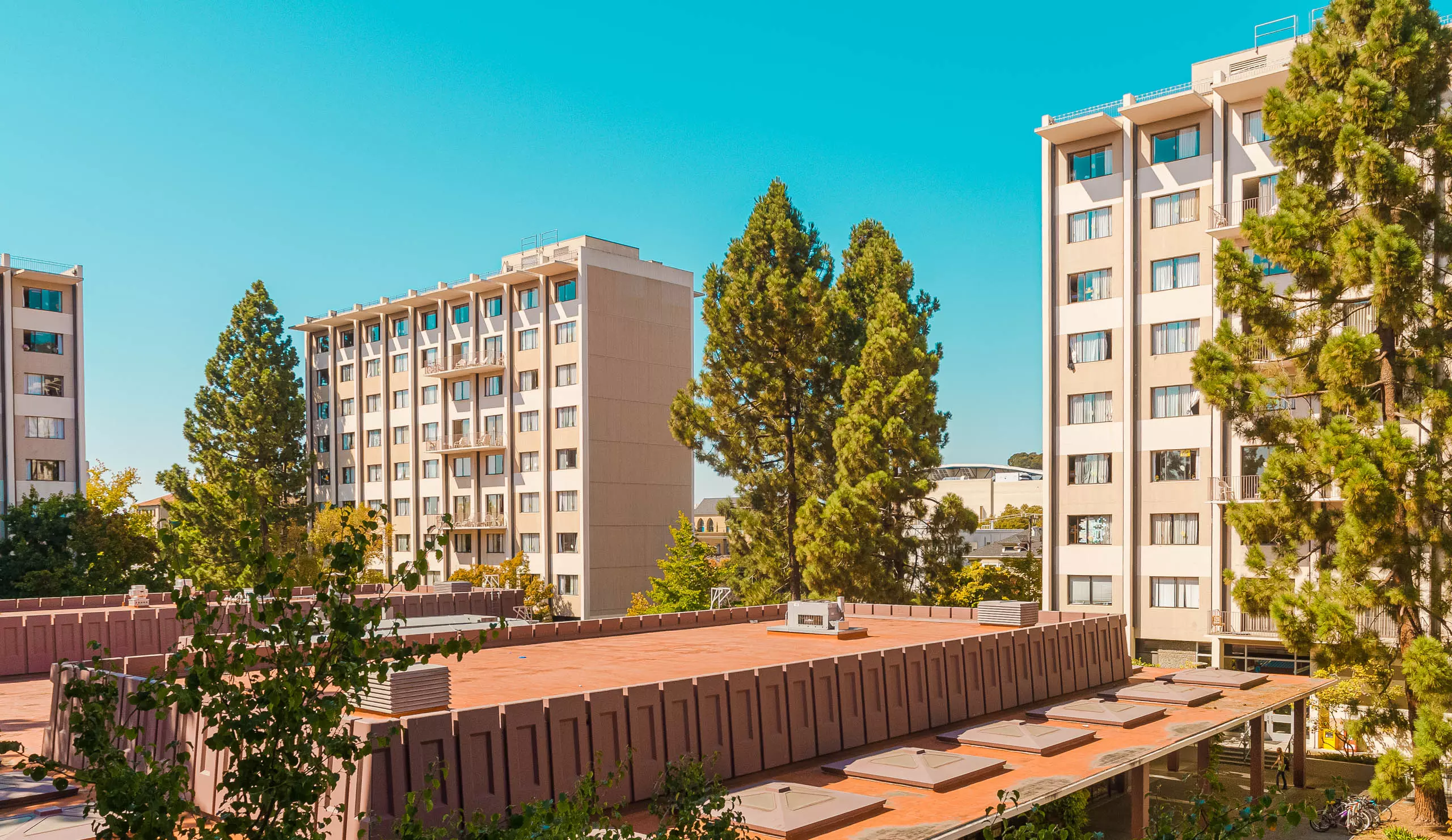
Financials
UC Berkeley has unique need-based financial aid programs, including the Blue and Gold Opportunity Plan, the Parent Grant, and the Undergraduate Dream Act Aid, that cover some or all tuition and fees. UC Berkeley also offers some scholarship programs that provide financial awards mostly ranging from $1,000 to $6,000, with some awarding up to the full cost of attendance. These include the Regents’ and Chancellor’s Scholarship, Fiat Lux Scholarship, Berkeley Undergraduate Scholarship and Middle Class Scholarship. Some academic departments award scholarships to incoming students, regardless of residency status, often through an application process. In spite of these unique scholarships, however, it is quite rare for a student to have room and board expenses–the most expensive part of a UC education–funded through grants and scholarships.
California residents who meet specified income thresholds are also considered for Cal Grants, and US citizens and eligible noncitizens may also qualify for federal direct loans. International students are generally not eligible for federal, state or institutional financial aid, with the exception of departmental scholarships.
Housing & transportation
UC Berkeley is a residential campus, with guaranteed housing for first-year students—both freshmen and transfer students—in university housing. Because there is limited on-campus housing for second- or later-year students, most students choose to move off campus after their first year.
Students moving out of the dorms often lease apartments or houses with other students or move into sorority or fraternity houses, but juniors and seniors are also eligible to live in the International House, a special institution with a unique history, where many of the residents are international students from all over the world.
Students looking to keep costs down often choose to move into co-ops in the campus community. Co-ops require active participation by residents in the maintenance and operations of the house, including cooking and cleaning duties. Some co-ops require students to participate in weekly dinners at the co-op during the semester or year before moving in, to get to know the residents. Co-ops come in all sizes, from culturally-focused houses like Lothlorien, a vegetarian/vegan co-op with 58 residents, and the African American Theme House, with 21 residents; to small, intimate houses like Kidd House with 17 residents; to the enormous and vibrant Casa Zimbabwe with 124 residents. In total, the Berkeley Student Cooperative includes 17 houses and a few other affiliated residences.
Transit
Berkeley and the Bay Area have robust public transportation systems. Berkeley students receive free passes to ride AC Transit buses, which run often and are a convenient way for students to get around Berkeley and Oakland. UC Berkeley also operates Bear Transit shuttle buses for getting around campus. For longer trips into San Francisco or to Oakland Airport, students can take Bay Area Rapid Transit (BART) trains, which run frequently throughout the day and evening. (Berkeley's campus is just off the Downtown Berkeley BART station on the map below.) Because of the high cost of parking in Berkeley and the high quality of AC Transit and BART, most students will never need a car while at Cal.
Berkeley is easily accessible by road, air, and rail. A drive from Los Angeles takes approximately 6 hours, while a flight from Los Angeles to Oakland (OAK) or San Francisco (SFO) Airports takes about 50 minutes. Bay Area and Central Valley cities are accessible by rail as well. A rail journey from Bakersfield takes about 6 hours; from Sacramento it takes about 2 hours and 20 minutes.
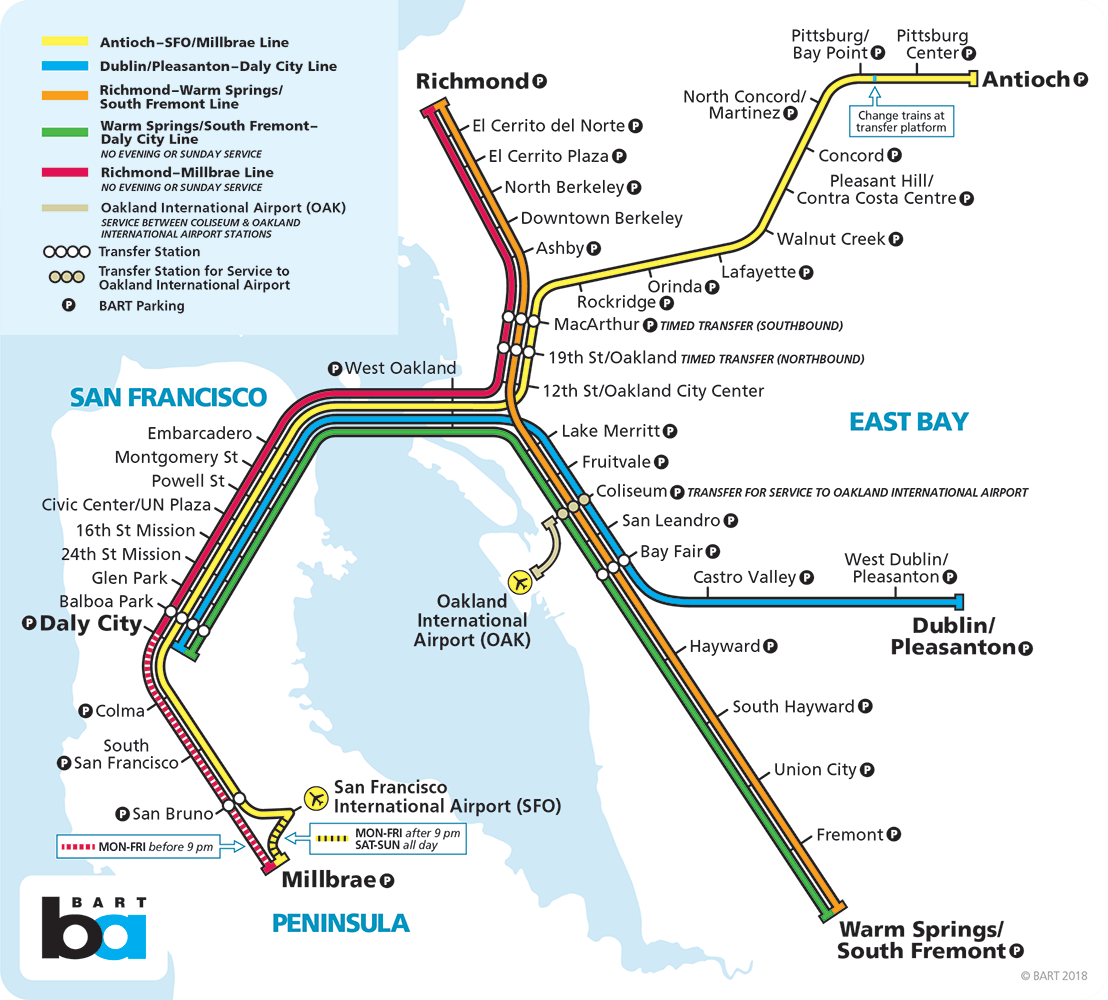
Students looking for campus spirit will find it in abundance at UC Berkeley.. Fall is a particularly spirited time, with administration, faculty, staff, students, alumni and community members converging on campus many Saturdays each fall for football games at Memorial Stadium. The Cal marching band marches across Sproul Plaza (the campus hub for activities), past the Campanile (the highest structure on campus), and up to Memorial Stadium each game day, entertaining everyone along the way. Alumni and Parents Weekend at Homecoming is an especially fun fall experience. Cal Day, which is typically held in April, is a fantastic opportunity to explore campus, attend lectures by professors who are academic leaders in their fields, and observe athletic events by many of Cal’s spring teams.
Students who are uninterested in spirit activities or campus sports culture will easily be able to avoid them, however. The campus is so large and diverse that students have plenty of space to explore their interests without being imposed on by traditional collegiate culture.
Students can find parties any night of the week, but the biggest nights are Thursday, Friday and Saturday nights, but students who prefer quieter evenings will have no trouble finding their people and their fun, as well. While there is a visible Greek presence on the southeast side of campus, with nearly three dozen Greek houses, the proportion of undergraduates who are in fraternities and sororities is less than 10%. The Greek system includes social, multicultural and historically black sororities and fraternities. Students who want to go to parties but don't want to participate in Greek life or its events can find a similar, but more laid-back, experience in the Co-op system.
Cal students have diverse interests and may join or start a student club or organization in nearly any area of interest. Genres of student organizations range arts-related to athletic to spirit to leadership to military to journalism to affinity groups to so much more. Recently, however, we have learned that some clubs and organizations–in addition to Greek organizations–require applications for admission and do not accept all applicants, potentially making it difficult to participate.
Two unique recreational programs are The Art Studio and Cal Adventures. The Art Studio offers non-credit art courses for Berkeley students and community members at relatively low costs, including in-person instruction and materials. Cal Adventures offers outdoor equipment rentals and adventure trips, such as kayaking and backpacking, to Berkeley students and community members.
Due to underrepresentation, students of color may often find themselves in spaces where they are the only person of their race or ethnicity. This may be more common in the Greek community, which is disproportionately white, in many classes, and in some co-ops. Although there are many spaces for students and communities of color to meet, socialize, spend time and live together, racial underrepresentation may be an important factor for some, especially Black, Latinx/Chicanx and AAPI students, to consider.
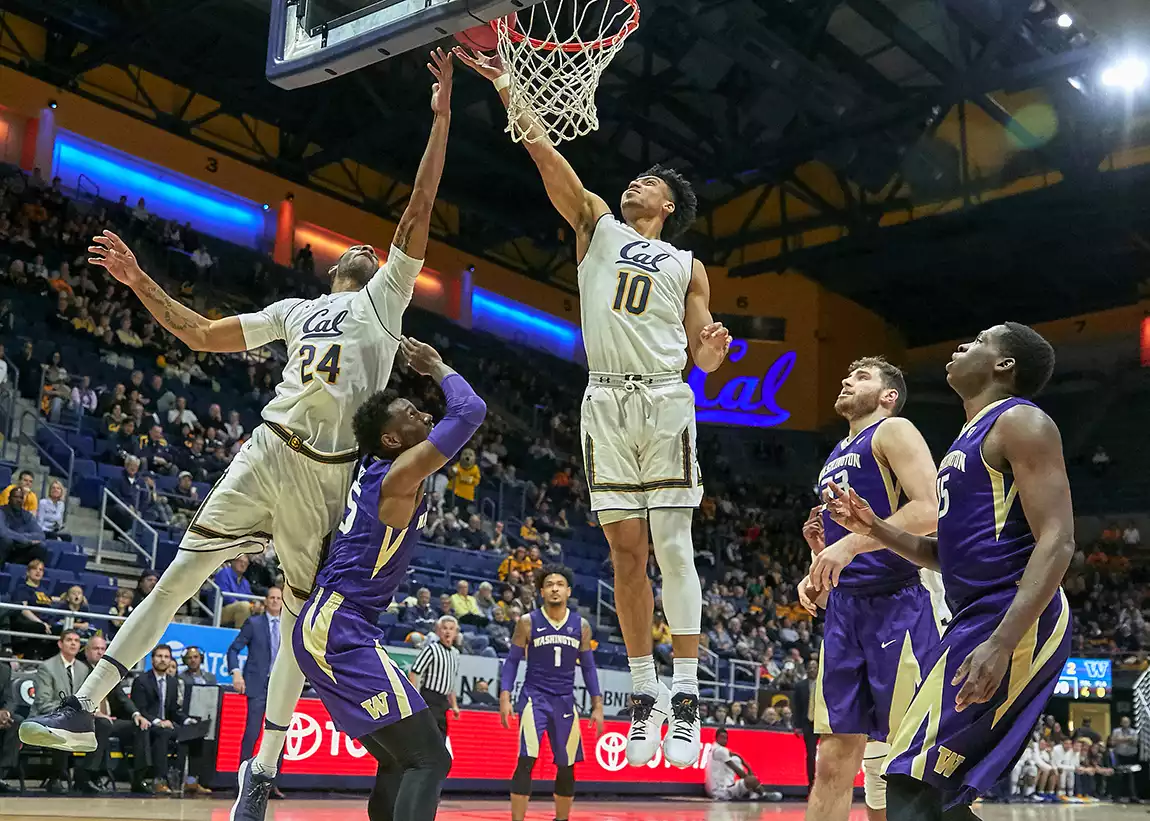
Athletics
UC Berkeley is one of the original four west coast universities that, in 1915, started what eventually became the Pac-12 Conference. The other founding members are the University of Oregon, the University of Washington and Oregon State University.
UC Berkeley has 13 men’s and 15 women’s varsity teams. UC Berkeley’s men’s crew team (rowing) was the first sport on campus, established in 1868, the year that the university was founded. The men’s and women’s crew teams are among the most successful on campus, in terms of number of national championships. The men’s rugby team, which is nearly as old as the men’s crew team, has long been one of the best in the nation, with the most national championships among all UC Berkeley varsity sports teams. Other top programs include track and field, swimming, diving, and water polo.
Cal also has 35 competitive club sports teams, ranging from the traditional to the less traditional and team to individual sports. The broad range of club sports includes baseball, badminton, ballroom dancing, figure skating, rock climbing, and volleyball, among many others.
For those who want to stay active but aren't interested in club or varsity teams, Berkeley has many intramural sports, which are student-driven. Interested students put together a team, usually with other students in their dorm or on their dorm floor, or in their co-op or fraternity/sorority, to practice and participate in games and matches with other intramural teams. Students have a choice of forming competitive teams, typically with other students who have competed in the sport previously, or recreational teams that are fun and friendly.
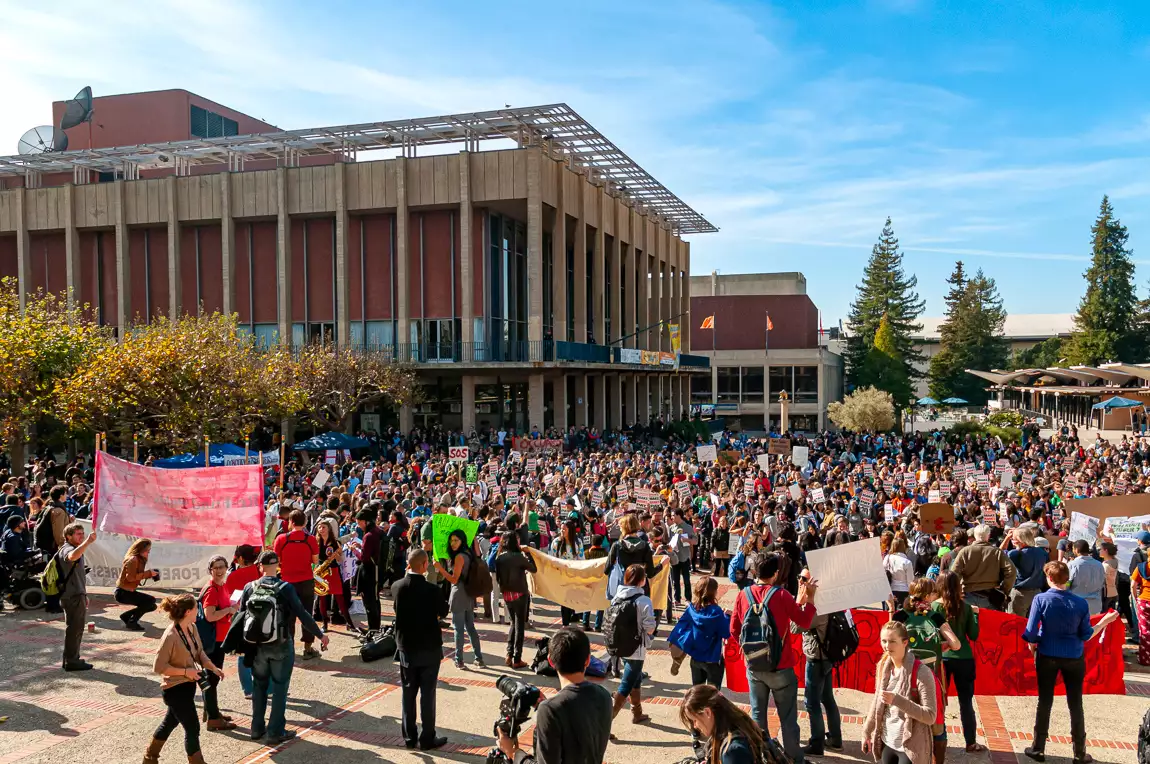
Health
Students attending UC campuses are automatically enrolled in the UC Student Health Insurance Plan (SHIP), a plan underwritten by Anthem Blue Cross, unless they submit a waiver each summer and receive approval. A successful waiver requires providing proof of health insurance that meets certain minimum coverage requirements.
Whether or not students enroll in SHIP, all students have access to UC Berkeley’s University Health Services at the Tang Center. The Tang Center provides care for common health conditions, such as colds, allergies, stomach illnesses, depression, and anxiety, and for minor injuries; providers can make referrals to community-based in-network providers for more complex health conditions. Students can make appointments with Tang providers or be seen on the same day in the Tang urgent care.
The Tang Center is only open during regular, weekday business hours, but an advice nurse is available by phone or message during nights and weekends to offer advice or refer out students who have urgent needs. Though the Tang Center has greatly expanded the number of counselors in Counseling and Psychological Services (CAPS) over the past few years, like most campuses and communities, the number of medical practitioners available is greatly dwarfed by the need. CAPS currently has around 60 staff members, including doctors, who serve more than 45,000 undergraduate and graduate students. The inability of CAPS to serve all students is a problem common to Tang Center as a whole.
Graduation requirements
Graduation requirements mostly depend on the major and college, but the Berkeley campus has one course requirement and the UC system two course requirements that all students must take to graduate from UC Berkeley. In general, for students in the College of Letters and Science (UC Berkeley’s liberal arts and largest college), about one-third of courses are major requirements, one-third are college, campus or UC requirements and one-third are electives. Other colleges, such as the College of Engineering, may have a higher proportion of courses required for the major and college, leaving fewer elective credits.
FACT CHECK & INFORMATION SUBMISSION
If you think we've made an error, or want to contribute new information to the article, please reach out to us at info@capstoneadvisers.com to submit your change or addition. Sources for new information are appreciated but not required. If we can verify your reported error or addition, an update will be made as soon as possible.


Berkeley, California
Est. 1868
Motto: Fiat Lux
(Let there be light)
California Golden Bears
Mascot: Oski the Bear
NCAA Division I FBS
Public research university
32,000 undergraduates
13,000 graduates
2120 faculty members
20:1 student to faculty ratio
52 average class size
178 acre main campus
Urban setting
Semester system
Two 15-week terms per year
Summer sessions
Mild, temperate climate with warm summers, cool winters, and a high proportion of sunny days
Admissions Evaluation
Evaluates
Course rigor
High school GPA
Application essay
Extracurricular activities
Character or personal qualities
Volunteer work
Work experience
Talent or ability
First-generation status
California residency
Does not evaluate
Test scores (SAT/ACT)
Letters of recommendation
Demonstrated interest
Interview
Class rank
Legacy status
Geographical residence
Religious affiliation
Race or ethnicity
Exceptions
Some students may occasionally be invited to submit letters of recommendation if more information is needed to evaluate their applications.
Application Deadline
November 30
First-year application deadline
Transfer application deadline
Submissions accepted from October 1 to November 30
Regular Decision only
Fall Admission only
Finances
$35,000-$40,000 / year
California resident total cost
$70,000+ / year
Non-resident total cost
California resident tuition
$14,000-$15,000 / year
Non-resident tuition
$46,000 / year
Housing & Meal Plan
$15,000-$20,000 / year
Student Health Insurance Plan
Additional $4,000 if not waived
Financial Aid
80%
Percent of financial need met (average)
$7,600 / year
Amount of merit aid awarded to students without financial need (average)
10%
Percent of undergraduates without financial need receiving merit aid
Notable Majors & Programs
10 Engineering majors, with additional concentrations
Electrical Engineering & Computer Science (EECS)
Molecular & Cell Biology, with 5 concentrations
Environmental Fields
Environmental Engineering;
Sustainable Environmental Design;
Conservation & Resource Studies;
Environmental Economics & Policy;
Ecosystem Management & Forestry
15 Cultural Studies majors
Gender and Women's Studies;
Native American Studies;
Middle Eastern Languages & Cultures;
and more
Many language departments
6 Slavic Languages;
5 Scandinavian Languages;
7 European Languages;
2 East Asian Languages;
South & Central American Languages;
Several Indigenous Californian & American languages;
and more
Special Business Programs
Management, Entrepreneurship & Technology (MET);
Biology + Business Program;
Global Management Program (GMP)
Equity & Inclusion
Transfer Equity
- Transfer programming & services: Yes
- Transfer housing guaranteed: Yes
- Separate transfer housing provided: No
- Transfer admission rate: 20%
- Transfer Student Center
Disability Support & Equity
- K&W Category: Coordinated Services
- ASD Services: Spectrum Connect
- Disabled Students' Program (DSP)
- Peer & paid tutoring
- Highly accessible campus
- Highly accessible local community
- Long history of access, support for physically disabled students & faculty
Racial Equity
- Black, AAPI, Latinx, Native American Student Development Offices
- Multicultural Community Center (MCC)
- Inclusive housing policies & options
- Diverse student & local community
- Some communities of color underrepresented
- Lack of official resources (Prop 209)
LGBTQ+ Equity
- Financial support for SRS & HRT
- Gender Equity Resource Center (GenEq)
- Inclusive housing policies & options
- Supportive, diverse student community
- Inclusive local community
- Community-based LGBTQ+ resources
Other Equity
After Graduating
Medical school acceptance rate: 50-70%
Law school acceptance rate: 75-90%
Robust career & graduate school admissions counseling services for students and recent graduates
Startup incubator (Startup@Berkeley) for student- and faculty-founded startups
Top: Wheeler Hall and Sather Tower, UC Berkeley
Bottom: UC Berkeley campus and San Francisco Bay, view from Lipman Room, Barrows Hall, 2012




![ucb_map2 UC Berkeley [location on map of North America]](https://capstoneadvisers.com/wp-content/uploads/2023/07/ucb_map2.png)
Social life, recreation & campus spirit